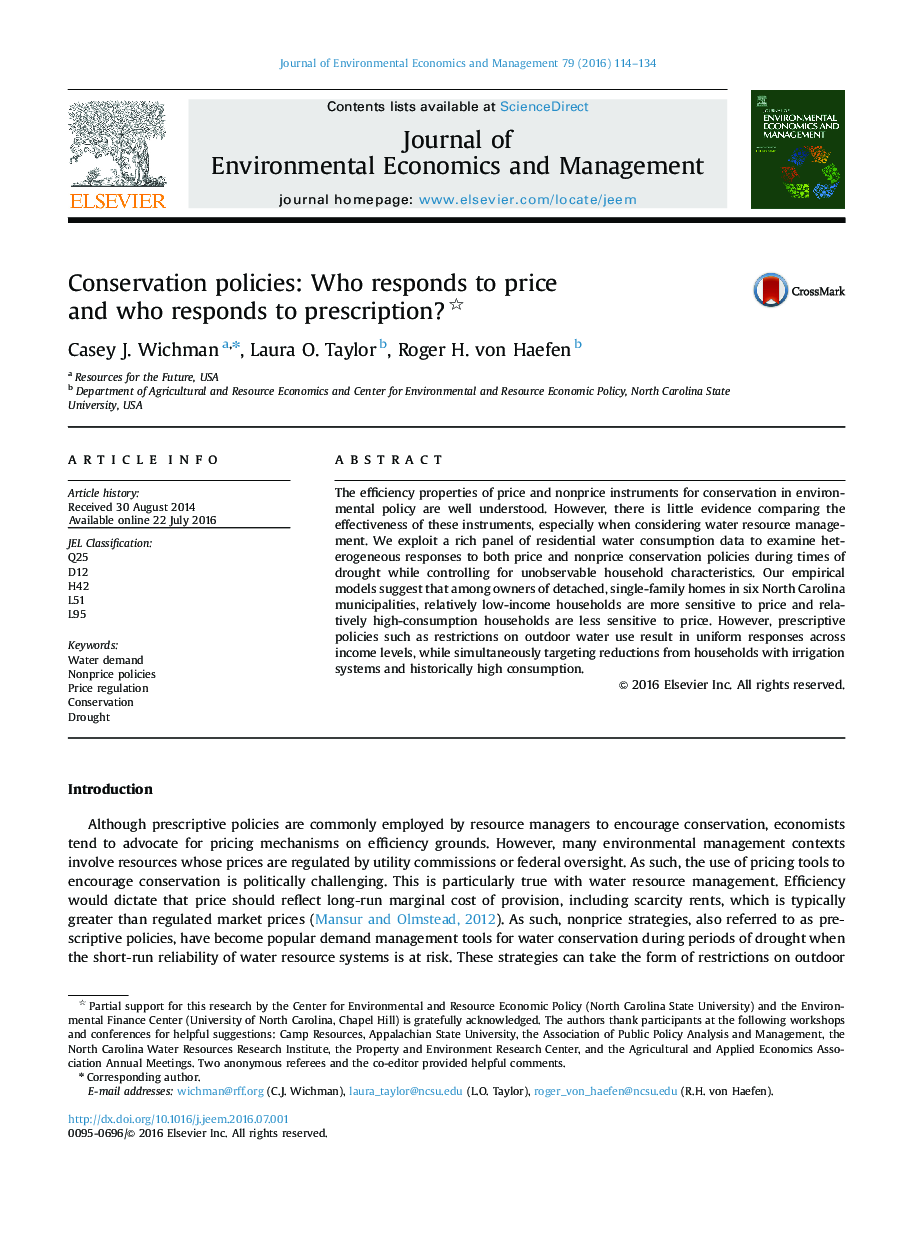| Article ID | Journal | Published Year | Pages | File Type |
|---|---|---|---|---|
| 959136 | Journal of Environmental Economics and Management | 2016 | 21 Pages |
The efficiency properties of price and nonprice instruments for conservation in environmental policy are well understood. However, there is little evidence comparing the effectiveness of these instruments, especially when considering water resource management. We exploit a rich panel of residential water consumption data to examine heterogeneous responses to both price and nonprice conservation policies during times of drought while controlling for unobservable household characteristics. Our empirical models suggest that among owners of detached, single-family homes in six North Carolina municipalities, relatively low-income households are more sensitive to price and relatively high-consumption households are less sensitive to price. However, prescriptive policies such as restrictions on outdoor water use result in uniform responses across income levels, while simultaneously targeting reductions from households with irrigation systems and historically high consumption.
